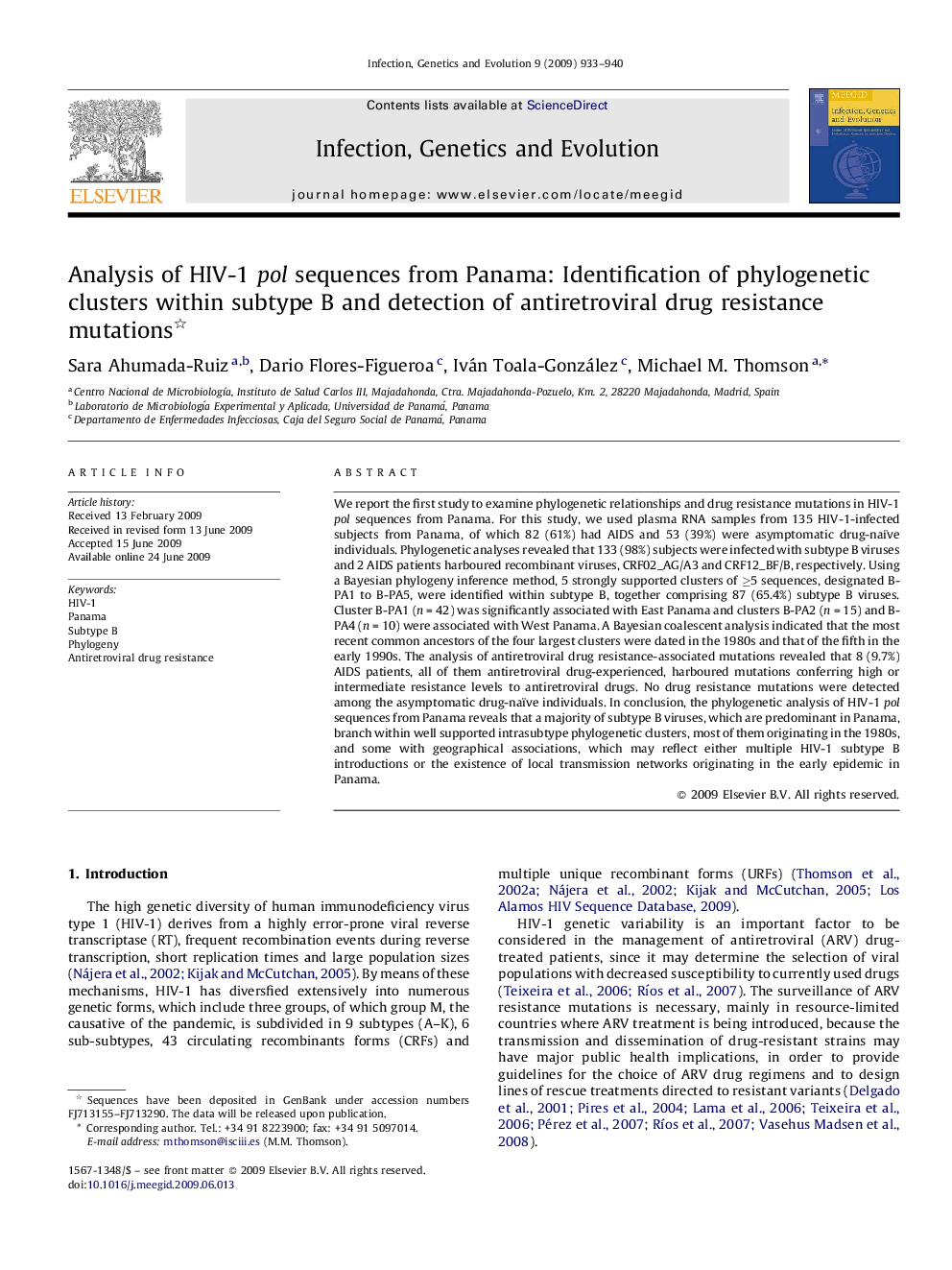| کد مقاله | کد نشریه | سال انتشار | مقاله انگلیسی | نسخه تمام متن |
|---|---|---|---|---|
| 2823366 | 1161383 | 2009 | 8 صفحه PDF | دانلود رایگان |

We report the first study to examine phylogenetic relationships and drug resistance mutations in HIV-1 pol sequences from Panama. For this study, we used plasma RNA samples from 135 HIV-1-infected subjects from Panama, of which 82 (61%) had AIDS and 53 (39%) were asymptomatic drug-naïve individuals. Phylogenetic analyses revealed that 133 (98%) subjects were infected with subtype B viruses and 2 AIDS patients harboured recombinant viruses, CRF02_AG/A3 and CRF12_BF/B, respectively. Using a Bayesian phylogeny inference method, 5 strongly supported clusters of ≥5 sequences, designated B-PA1 to B-PA5, were identified within subtype B, together comprising 87 (65.4%) subtype B viruses. Cluster B-PA1 (n = 42) was significantly associated with East Panama and clusters B-PA2 (n = 15) and B-PA4 (n = 10) were associated with West Panama. A Bayesian coalescent analysis indicated that the most recent common ancestors of the four largest clusters were dated in the 1980s and that of the fifth in the early 1990s. The analysis of antiretroviral drug resistance-associated mutations revealed that 8 (9.7%) AIDS patients, all of them antiretroviral drug-experienced, harboured mutations conferring high or intermediate resistance levels to antiretroviral drugs. No drug resistance mutations were detected among the asymptomatic drug-naïve individuals. In conclusion, the phylogenetic analysis of HIV-1 pol sequences from Panama reveals that a majority of subtype B viruses, which are predominant in Panama, branch within well supported intrasubtype phylogenetic clusters, most of them originating in the 1980s, and some with geographical associations, which may reflect either multiple HIV-1 subtype B introductions or the existence of local transmission networks originating in the early epidemic in Panama.
Journal: Infection, Genetics and Evolution - Volume 9, Issue 5, September 2009, Pages 933–940